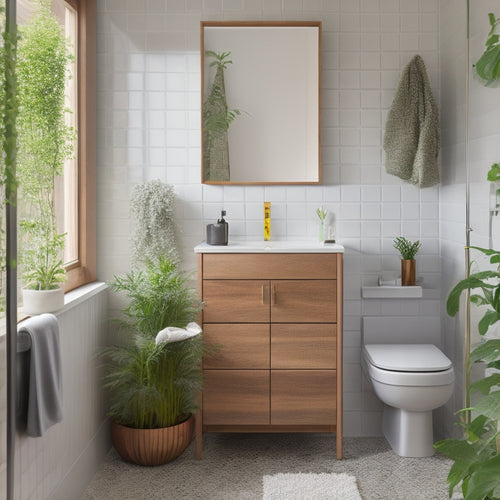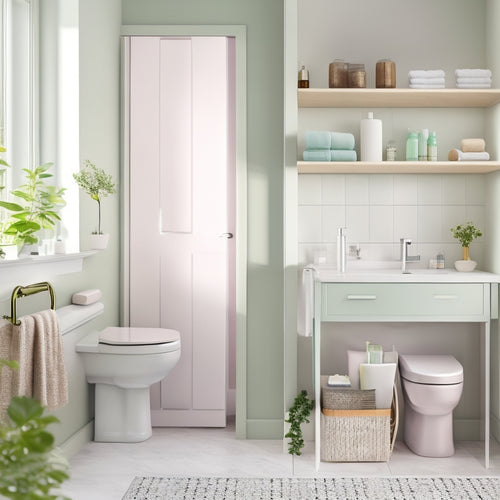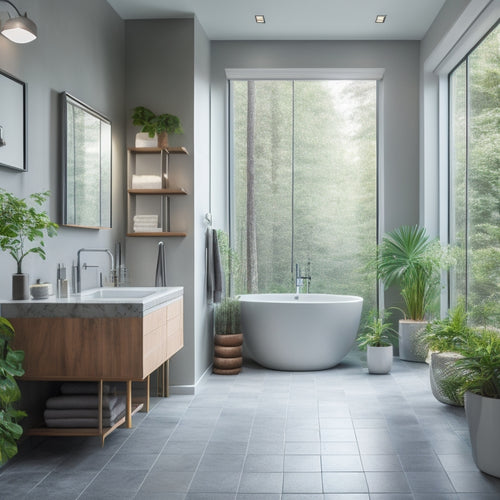
Revamp Your Jeep Wrangler: Water Pump Replacement
Share
You're about to replace your Jeep Wrangler's water pump, an essential step in maintaining your engine's health. Before starting, gather necessary tools like a socket set and wrenches, as well as a new water pump and gasket sealant. Begin by draining the coolant, then release the serpentine belt tension to access the pump. Remove the fan and shroud, and swap out the old pump with the new one. Secure it properly and apply gasket sealant to prevent leaks. With these steps completed, you'll be well on your way to a successful replacement - and there's more to come.
Key Takeaways
• Regular maintenance of the water pump prevents engine overheating and costly repairs in your Jeep Wrangler.
• Ensure you have a new water pump, gasket sealant, and coolant before starting the replacement process.
• Remove the fan and shroud to access the water pump, and apply gasket sealant to prevent leaks during installation.
• Double-check your work to avoid common mistakes, such as improper coolant refilling, misaligned belt installation, and loose connections.
• Consult your Jeep Wrangler's manual for guidance, and verify all necessary tools and parts before starting the replacement process.
Understanding Water Pump Importance
As you explore the process of replacing your Jeep Wrangler's water pump, it's essential to grasp the vital role this component plays in maintaining your engine's ideal operating temperature.
The water pump is responsible for circulating coolant throughout the engine, ensuring peak engine cooling and preventing overheating.
Regular maintenance and replacement of the water pump provide significant benefits, including improved engine performance, increased fuel efficiency, and extended engine lifespan.
By replacing your water pump, you'll prevent costly repairs and maintain your Jeep's overall health.
Understanding the importance of the water pump is the first step in ensuring a successful replacement process.
Gathering Essential Tools and Materials
You'll need to gather a set of essential tools and materials before starting the water pump replacement process. This preparation is vital for a successful replacement.
These include a socket set, wrenches, screwdriver, new water pump, gasket sealant, coolant, and a drain pan.
To make sure you have everything, create a checklist of the following:
-
Tool selection: socket set, wrenches, and screwdriver for disassembly and reassembly.
-
Material preparation: new water pump, gasket sealant, and coolant for the replacement.
-
Equipment checklist: drain pan for containing spilled coolant during the process.
Step-by-Step Water Pump Replacement
Now that you've gathered all the necessary tools and materials, remove the drain plug to drain the coolant into a drain pan, making sure to position it under the radiator to catch any spills.
Next, release the tension on the serpentine belt and slide it off the pulleys to access the water pump. Remove the fan and shroud to expose the water pump. Take note of any signs of wear or damage, as this will help with troubleshooting issues later.
Using DIY techniques, carefully remove the old water pump and replace it with the new one, ensuring a secure fit. Don't forget to apply gasket sealant to prevent leaks.
Tips for a Successful Replacement
Your attention to detail during the replacement process is crucial, so double-check your work and refer to the manual if you're unsure about any step. This guarantees a successful and stress-free water pump replacement.
Here are some additional tips to keep in mind:
-
Troubleshooting tips: Keep an eye out for signs of engine overheating, such as a rising temperature gauge or steam coming from the hood. Addressing these issues promptly can prevent further damage.
-
Maintenance precautions: Regularly check your coolant levels and condition to prevent corrosion and damage to your engine.
-
Pre-replacement checks: Verify that you have all the necessary tools and parts before starting the replacement process.
Avoiding Common Replacement Mistakes
Replacing the water pump without a clear understanding of the process can lead to costly mistakes, but having knowledge of common pitfalls helps guarantee a successful and efficient replacement.
You'll want to avoid common errors like improper coolant refilling, misaligned belt installation, and loose connections. These mistakes can lead to engine overheating, damage, or even failure.
To troubleshoot, double-check your work, consult your manual, and consider seeking professional help if you're unsure. Additionally, make sure you're using the correct type and mixture of coolant, and that all components are securely fastened.
Frequently Asked Questions
Can a Failing Water Pump Cause Damage to Other Engine Components?
You'll want to address a failing water pump promptly, as it can cause engine failure and component overheating, leading to costly repairs; a seized engine, blown head gasket, or warped cylinder head are all potential consequences if left unchecked.
How Often Should I Inspect My Jeep Wrangler's Water Pump for Signs of Wear?
You should inspect your Jeep Wrangler's water pump every 30,000 miles as part of routine maintenance. Perform a visual inspection, looking for signs of wear like leaks, corrosion, or noise, to catch potential issues before they cause damage.
Are There Any Specific Coolant Types Recommended for Jeep Wranglers?
When choosing a coolant, you'll want to prioritize compatibility; for your Jeep Wrangler, opt for a high-quality Ethylene-based coolant, which offers superior heat transfer and corrosion protection, ensuring peak engine performance and longevity.
Will a New Water Pump Improve My Jeep Wrangler's Fuel Efficiency?
You'll likely see improved fuel efficiency with a new water pump, as enhanced pump performance optimizes engine operation, reducing energy wasted on overheating and increasing overall engine efficiency.
Can I Drive My Jeep Wrangler With a Failing Water Pump for a Short Distance?
You're taking a risk driving your Jeep Wrangler with a failing water pump, even for a short distance. Be prepared for an emergency stop due to overheating, and consider the potential damage to your engine.
Related Posts
-

Small Bathroom Cabinet Design Inspiration
If you're looking for small bathroom cabinet design inspiration, think vertical! Employ wall-mounted racks and floati...
-

Wall-Mounted Bathroom Organizers for Small Spaces
Wall-mounted bathroom organizers are perfect for maximizing storage in small spaces. By utilizing vertical space, you...
-

Revamp Your Bathroom Like a Pro
You're about to start on a journey to transform your outdated bathroom into a stunning oasis that exudes luxury and s...


